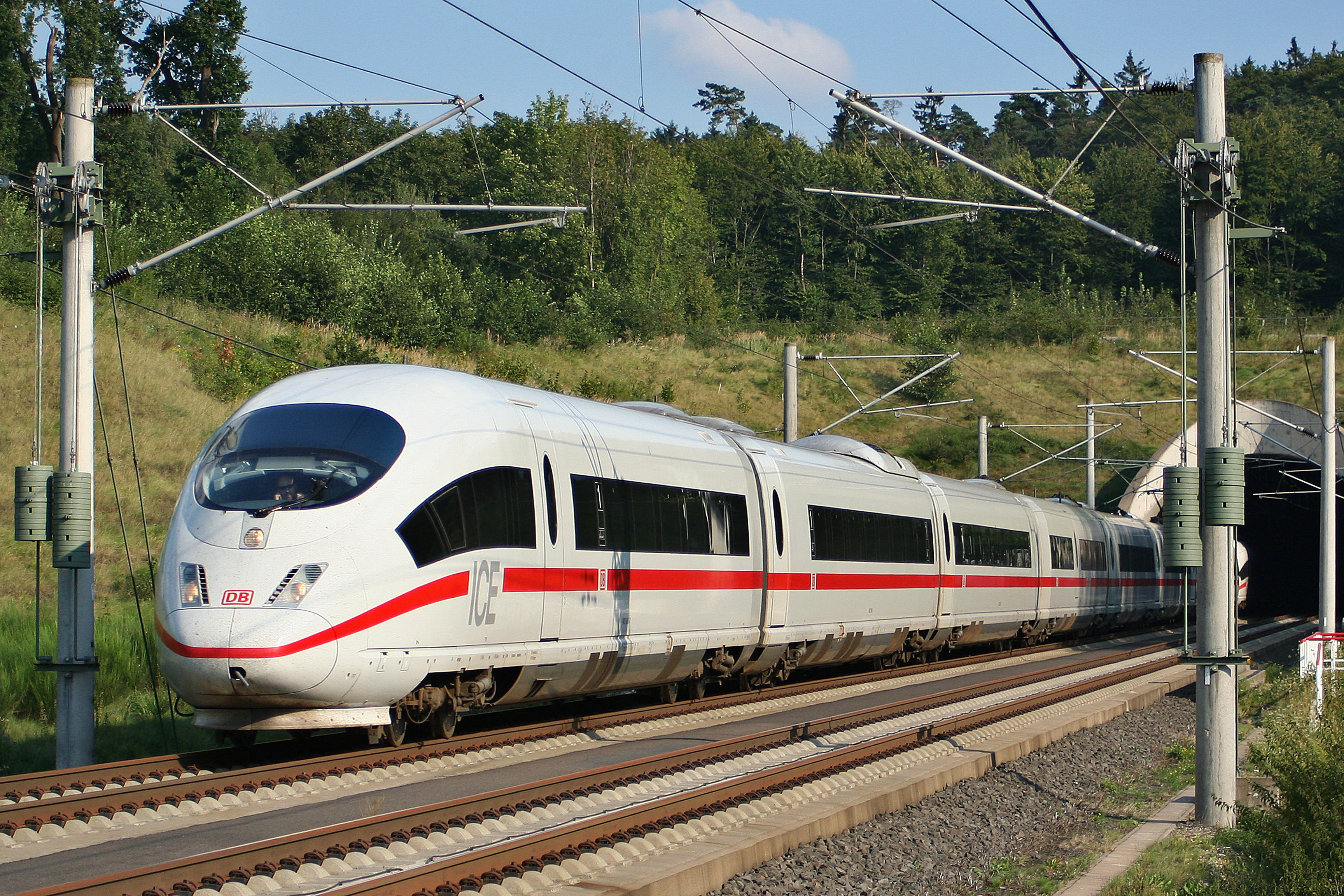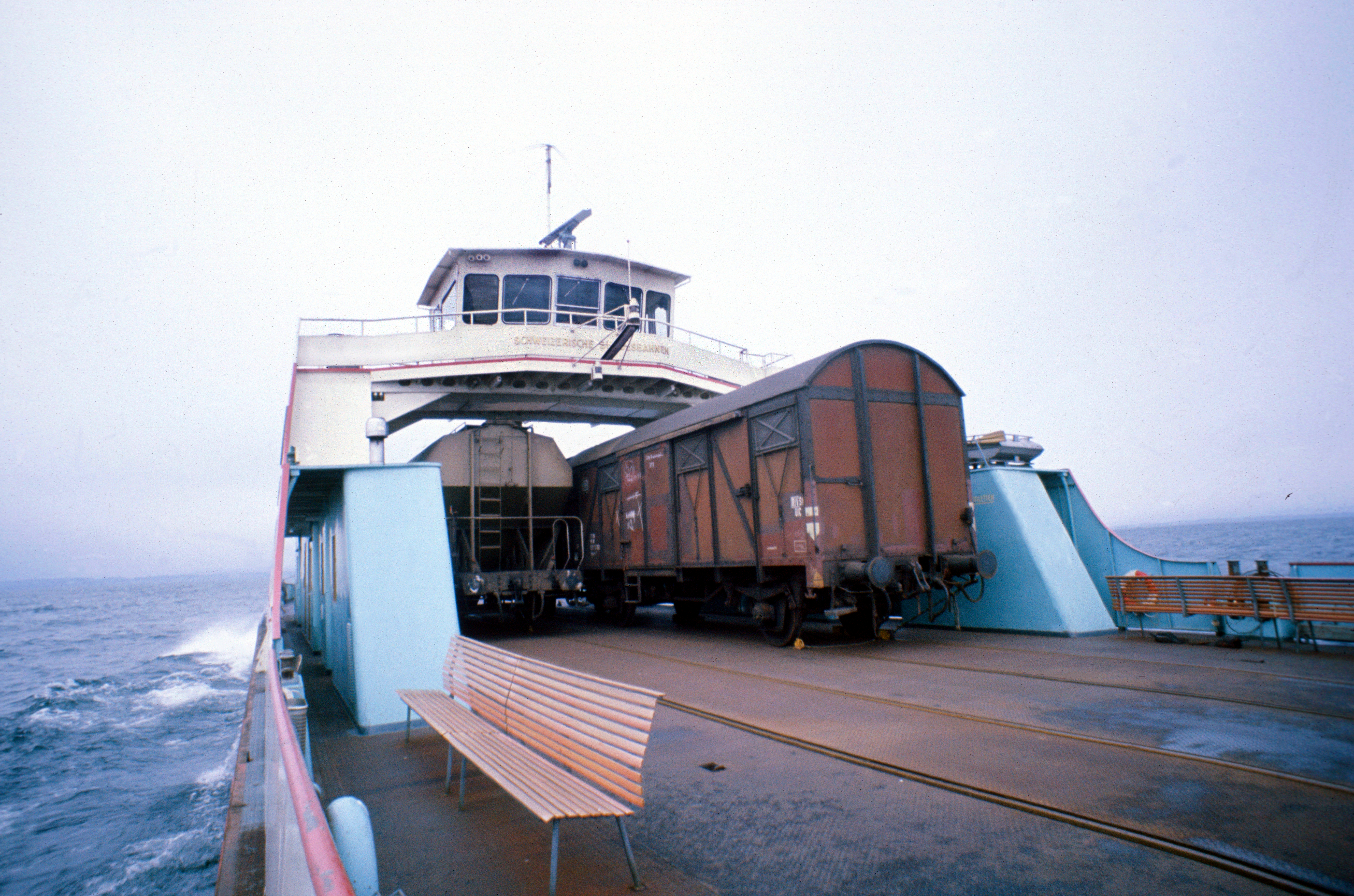|
Friedrichshafen Stadt–Friedrichshafen Hafen Railway
The Friedrichshafen Stadt–Friedrichshafen Hafen railway (or ''Friedrichshafen City–Friedrichshafen Port railway''; German: ''Bahnstrecke Friedrichshafen Stadt–Friedrichshafen Hafen'') is a standard gauge and electrified railway line in the city of Friedrichshafen in the German state of Baden-Württemberg. It connects the town station with the port station. The 816 metre-long branch line has its own VzG route number, 4531, although operationally it is a connection between two parts of the same station. History After Friedrichshafen had been connected to the first section of the Ulm–Friedrichshafen railway in 1847, the Royal Württemberg State Railways (''Königlich Württembergische Staats-Eisenbahnen'') began on the construction of the extension towards the port in 1849. The new line to the shore of Lake Constance finally opened on 1 June 1850. Its maximum gradient is 1:45 and its minimum curve radius is 150 metre. Its main purpose continues to be to link the German ... [...More Info...] [...Related Items...] OR: [Wikipedia] [Google] [Baidu] |
15 KV AC Railway Electrification
Railway electrification using at are used on transport railways in Rail transport in Germany, Germany, Rail transport in Austria, Austria, Rail transport in Switzerland, Switzerland, Rail transport in Sweden, Sweden, and Rail transport in Norway, Norway. The high voltage enables high power transmission with the lower frequency reducing the losses of the traction motors that were available at the beginning of the 20th century. Globally, railway electrification in late 20th century tends to use 25 kV AC railway electrification, AC systems which has become the preferred standard for new railway electrifications. Nevertheless, local extensions of the existing network is commonplace. In particular, the Gotthard Base Tunnel (opened on 1 June 2016) uses 15 kV, 16.7 Hz electrification. Due to high conversion costs, it is unlikely that existing systems will be converted to despite the fact that this would reduce the weight of the on-board step-down transformers to one t ... [...More Info...] [...Related Items...] OR: [Wikipedia] [Google] [Baidu] |
Royal Württemberg State Railways
The Royal Württemberg State Railways (''Königlich Württembergische Staats-Eisenbahnen'' or ''K.W.St.E.'') were the state railways of the Kingdom of Württemberg (from 1918 the ''People's State of Württemberg'') between 1843 and 1920. Early history As in many other states of the German Empire, there was increasing debate about how to improve transport communications across the country from about 1825. Private interest groups were formed and, from 1834, the state also worked on the question, giving experts the task of finding suitable solutions. After years of preparatory work, it was decided to set up a railway network, the main lines of which would be built by the state. The Railway Bill of 18 April 1843, established the legal foundation for the construction of the railway network; this date is seen as the birthday for the ''K.W.St.E.''. The law expressly envisaged that the construction of branch routes by private companies should also be possible. This law was at the sam ... [...More Info...] [...Related Items...] OR: [Wikipedia] [Google] [Baidu] |
Railway Lines Opened In 1850
Rail transport (also known as train transport) is a means of transport using wheeled vehicles running in railway track, tracks, which usually consist of two parallel steel railway track, rails. Rail transport is one of the two primary means of land transport, next to road transport. It is used for about 8% of passenger and rail freight transport, freight transport globally, thanks to its Energy efficiency in transport, energy efficiency and potentially high-speed rail, high speed.Rolling stock on rails generally encounters lower friction, frictional resistance than rubber-tyred road vehicles, allowing rail cars to be coupled into longer trains. Power is usually provided by Diesel locomotive, diesel or Electric locomotive, electric locomotives. While railway transport is capital intensity, capital-intensive and less flexible than road transport, it can carry heavy loads of passengers and cargo with greater energy efficiency and safety. Precursors of railways driven by human or an ... [...More Info...] [...Related Items...] OR: [Wikipedia] [Google] [Baidu] |
Railway Lines In Baden-Württemberg
NB: The scheduled routes given here are based primarily on the timetable of the Deutsche Bahn dated 9 December 2007.In addition the list of routes (see external links) reflects those of the German Regional Railway (''Deutsche Regionaleisenbahn'') as at 20 January 2008 Timetable routes The numbering of German timetabled routes (''Kursbuchstrecken'' or ''KBS'') was changed twice by the Deutsche Bundesbahn after the Second World War, in 1950 and 1970. In the Deutsche Reichsbahn (East Germany) the numbering system was completely changed in 1968. The last major revision took place after German reunification in 1992, as a result of which a common system for DB and DR routes was introduced. In addition changes, usually minor, are made annually. Hamburg and coastal region (100 to 199) ''(former Bundesbahn division of Hamburg and Reichsbahn divisions Schwerin and Greifswald)'' Berlin/Brandenburg/Saxony-Anhalt/East Saxony (200 to 299) Lower Saxony/Saxony-Anhalt region (300 to ... [...More Info...] [...Related Items...] OR: [Wikipedia] [Google] [Baidu] |
Deutsche Bahn
(, ; abbreviated as DB or DB AG ) is the national railway company of Germany, and a state-owned enterprise under the control of the German government. Headquartered in the Bahntower in Berlin, it is a joint-stock company ( AG). DB was founded after the merger between Deutsche Bundesbahn and the East German Deutsche Reichsbahn in 1994 after the unification of Germany and has been operating ever since. is the second-largest transport company in Germany, after the German postal and logistics company / DHL. DB provides both long-distance and regional transport, serving around 132 million long distance passengers and 1.6 billion regional passengers in 2022. In 2022, DB transported 222 million tons of cargo. Company profile The group is divided into several companies, including '' DB Fernverkehr'' (long-distance passenger), '' DB Regio'' (local passenger services) and '' DB Cargo'' (rail freight). The Group subsidiary '' DB InfraGO'' also operates large parts of the German ... [...More Info...] [...Related Items...] OR: [Wikipedia] [Google] [Baidu] |
Train Ferry
A train ferry is a ship (ferry) designed to carry Railroad car, railway vehicles, as well as their cargoes and passengers. Typically, one level of the ship is fitted with Track (rail transport), railway tracks, and the vessel has a door at the front and/or rear to give access to the wharves. In the United States, train ferries are sometimes referred to as "car ferries", as distinguished from "auto ferries" used to transport automobiles. The wharf (sometimes called a "ferry slip, slip") has a ramp, and a Linkspan#Train ferry, linkspan or "apron", balanced by weights, that connects the railway proper to the ship, allowing for tidal or seasonal changes in water level. While railway vehicles can be and are shipped on the decks or in the holds of ordinary ships, purpose-built train ferries can be quickly loaded and unloaded by roll-on/roll-off, especially as several vehicles can be loaded or unloaded at once. A train ferry that is a barge is called a car float or rail barge. Some trai ... [...More Info...] [...Related Items...] OR: [Wikipedia] [Google] [Baidu] |
Friedrichshafen–Romanshorn Ferry Line
The Lake Constance train ferries (''Bodensee-Trajekte'') were train ferries that were set up in the 19th century by railway companies to transport rail freight wagons across Lake Constance (''Bodensee'') between the five states located around the lake at the time. In the heyday of the railways, they were of great importance, especially for freight traffic. Early history Traffic parallel to the shore initially dominated shipping on Lake Constance. It was not until railways reached some port cities that the importance of the connections across Lake Constance increased, especially for grain traffic. Starting from 1824, steamboats were operated by different companies, rising to 2,874 in 1874. * The first German railway company to reach Lake Constance was the Royal Württemberg State Railways (''Königlich Württembergische Staats-Eisenbahnen'') with its Southern Railway (''Südbahn'') in Friedrichshafen. The railway line from Friedrichshafen to Ravensburg was opened on 8 November 18 ... [...More Info...] [...Related Items...] OR: [Wikipedia] [Google] [Baidu] |
Minimum Railway Curve Radius
The minimum railway curve radius is the shortest allowable design radius for the centerline of railway tracks under a particular set of conditions. It has an important bearing on construction costs and operating costs and, in combination with superelevation (difference in elevation of the two rails) in the case of train tracks, determines the maximum safe speed of a curve. The minimum radius of a curve is one parameter in the design of railway vehicles as well as trams; monorails and automated guideways are also subject to a minimum radius. History The first proper railway was the Liverpool and Manchester Railway, which opened in 1830. Like the tram roads that had preceded it over a hundred years, the L&M had gentle curves and gradients. Reasons for these gentle curves include the lack of strength of the track, which might have overturned if the curves were too sharp causing derailments. The gentler the curves, the greater the visibility, thus boosting safety via increa ... [...More Info...] [...Related Items...] OR: [Wikipedia] [Google] [Baidu] |
Lake Constance
Lake Constance (, ) refers to three bodies of water on the Rhine at the northern foot of the Alps: Upper Lake Constance (''Obersee''), Lower Lake Constance (''Untersee''), and a connecting stretch of the Rhine, called the Seerhein (). These waterbodies lie within the Lake Constance Basin () in the Alpine Foreland through which the Rhine flows. The nearby '' Mindelsee'' is not considered part of Lake Constance. The lake is situated where Germany, Switzerland, and Austria meet. Its shorelines lie in the German states of Baden-Württemberg and Bavaria; the Swiss cantons of St. Gallen, Thurgau, and Schaffhausen; and the Austrian state of Vorarlberg. The actual locations of the country borders within the lake are disputed. The Alpine Rhine forms, in its original course ( Alter Rhein), the Austro-Swiss border and flows into the lake from the south. The High Rhine flows westbound out of the lake and forms (with the exception of the Canton of Schaffhausen, Rafzerfeld and Bas ... [...More Info...] [...Related Items...] OR: [Wikipedia] [Google] [Baidu] |
German Railway Route Numbers
German railway route numbers (German:''Streckennummern'') are used to designate and identify railway routes, or sections of routes, within Germany. In Germany, there are a total of 3 different numbering systems used by the Deutsche Bahn, which meet different requirements. These systems are: # VzG line numbers (four digit, unambiguous identification of a railway line) # Timetabled route numbers (three digit, ''Kursbuchstrecke'' referring to a route of passenger services) # Restricted speed section (''La'') route numbers (one to three digit) In addition there are numbers in the railway operators' timetables; these are not covered here. Sources * Eisenbahnatlas Deutschland, Ausgabe 2007/2008, Schweers & Wall, * Das große Archiv der Eisenbahnstrecken in Deutschland, Herausgeber Ernst Huber, Geranova * Hans-Jürgen Geisler: DB-Streckendaten – STREDA, Eisenbahningenieur (49) 12/1998 External links DB Netz AG TPS route pricing system [...More Info...] [...Related Items...] OR: [Wikipedia] [Google] [Baidu] |





